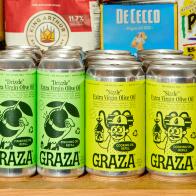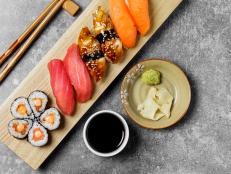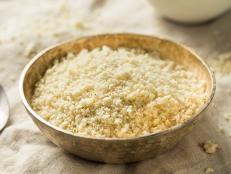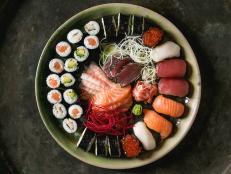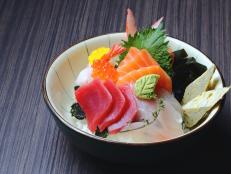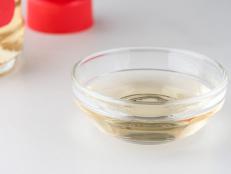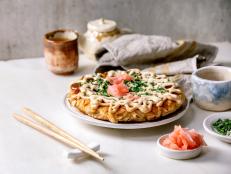What Is Crudo?
And what's the difference between sushi, sashimi and crudo? Two Japanese-American chefs and raw fish experts weigh in.

SippitySup/Getty Images
By Layla Khoury-Hanold for Food Network Kitchen
Layla Khoury-Hanold is a contributor at Food Network.
Perhaps you’ve seen crudo listed under the raw section on restaurant menus, but wondered what it is, exactly, and how it’s different than sashimi and sushi. For more info we consulted Jane Matsumoto, Director of Culinary Arts at The Japanese American Cultural & Community Center (JACCC) and Chris Ono, chef of Hansei at the JACCC.
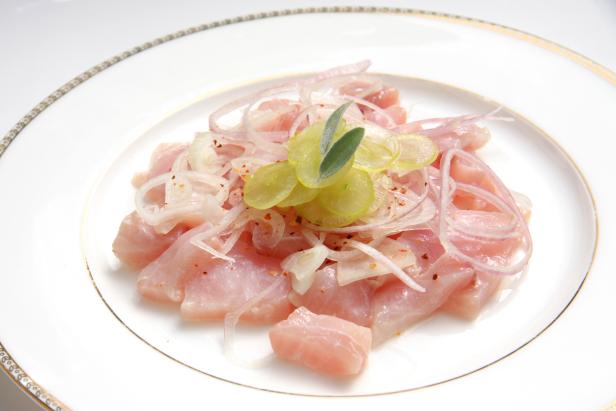
lenazap/Getty Images
What Is Crudo?
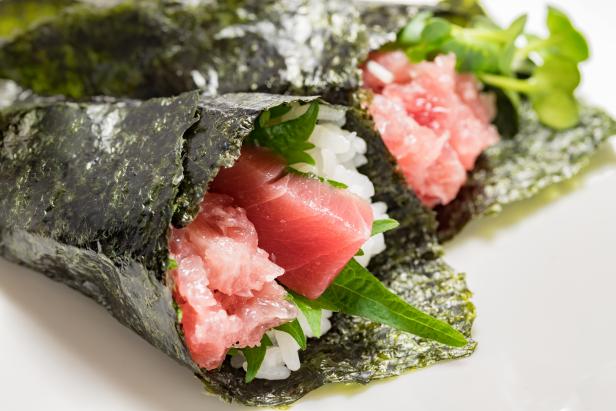
flyingv43/Getty Images
Crudo is a dish of raw fish or seafood that’s typically simply dressed with a combination of citrus and/or vinegar, olive oil and other seasonings. Crudo means “raw” in Italian and Spanish, and is used to refer to any dish of uncooked and dressed ingredients, including seafood, fish, meat and sometimes vegetables, as with Giada De Laurentiis’ Artichoke and Fennel Crudo.
“Italian crudo is probably the simplest version of crudo, some just being dressed with lemon, olive oil and salt,” Ono says. While Ono says that oil is not traditional to Japanese sashimi or sushi, other sauces such as citrus-based ponzu or soy-based, are part of sushi and sashimi flavorings. “My sashimi dishes actually lean more towards crudo or ceviche as I love the combination of seasonal fruit and lime juice with fish.”
What Is Tartare?
Tartare is a type of crudo made of chopped up seafood or protein bound together with a dressing or sauce. Matsumoto shares that Japanese use sashimi-grade fish to chop up into a tartare; and hand rolls, like spicy tuna roll or Hamachi, may also be made from tartare and chopped even finer. Hawaiian-style poke is similar to Japanese tartare, featuring sashimi-grade fish cut into small cubes that are flavored with soy, seaweed and sesame oil.
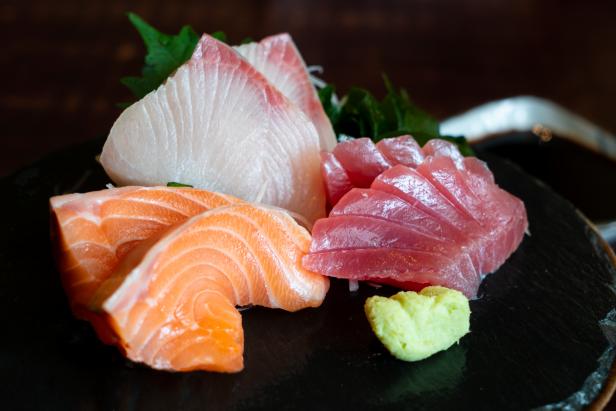
Prasit photo/Getty Images
What Is Carpaccio?
Carpaccio is a type of crudo in which the protein is thinly sliced or pounded very thin. It’s typically dressed with a combination of olive oil and citrus and paired with garnishes.
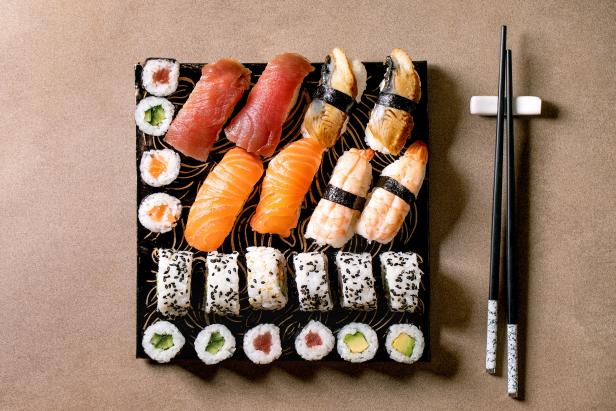
Natasha Breen/Getty Images
What Is Sashimi?
Sashimi is simply sliced raw fish. Ono shares that it is typically served with daikon, shiso, pickled ginger and wasabi, with soy sauce for dipping on the side. “Typically, sashimi is tuna, salmon or yellowtail but it can be higher-end Japanese fish from Japan. I have seen chicken sashimi, horse and beef. The chicken obviously has to be fresh and very organic,” Ono says.
Difference Between Sushi and Sashimi
Although both sushi and sashimi are simply prepared fish and seafood dishes that originated in Japan, sashimi is not sushi. Here are the main differences between sushi and sashimi:
-
Ingredients: Sushi is sliced fish served over rice seasoned with vinegar, whereas sashimi is simply sliced raw fish. Although sashimi-grade fish is used to make sushi, sushi can also incorporate cooked seafood, such as shrimp tempura, and vegetables.
-
Preparation: Fish cut for nigiri sushi tends to be a little bit thinner and longer than sashimi.
-
Styles: Sushi has many different iterations, including pressed sushi (box style, the oldest form), maki sushi (rolled sushi) and nigiri sushi (fish over rice). Sashimi is just typically served one way, although Ono says that chirashi most closely resembles sashimi over rice.
-
Serving: Sashimi is served unadorned, with accompaniments on the side, whereas some sushi, such as nigiri, are seasoned with soy sauce and/or wasabi.
Crudo Recipes
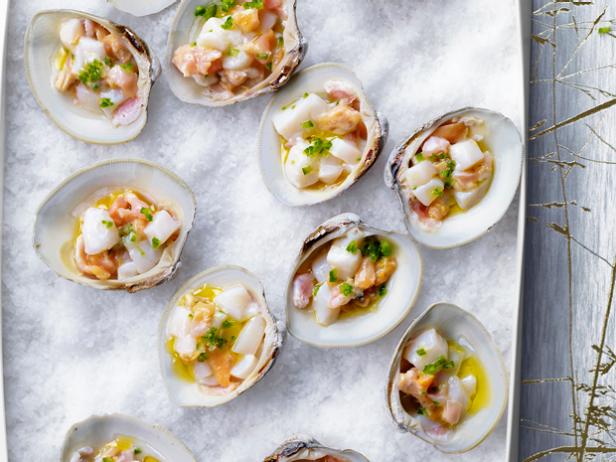
Fresh sea scallops and littleneck clams are tossed in a simple combination of lemon juice, olive oil and jalapeno. Serving the mixture in the reserved clam shells elevates the presentation, making for a sophisticated dinner party trick.
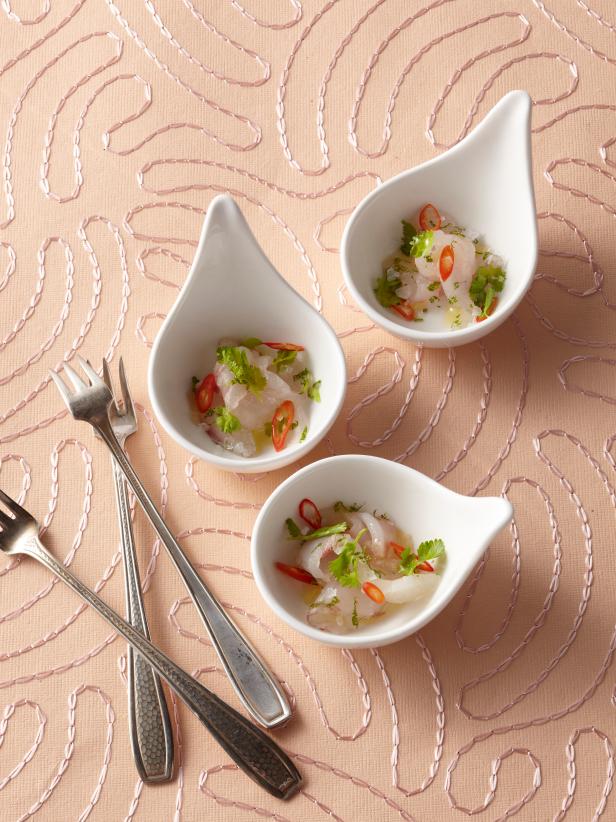
Yunhee Kim, 2011, Television Food Network, G.P. All Rights Reserved.
This recipe is proof that you don’t need to do much when you've got a pristine piece of fresh fish to work with. Lime, chile, fresh cilantro and good olive oil complement the briny flavors of sea bass beautifully.

For his luxe crudo preparation, chef Ritsuo Tsuchida marinates halibut with dashi kombu then slices it thinly, sushi nigiri style. He plates the fish with ponzu sauce, white truffle oil and mango salsa, then garnishes it with wasabi tobiko and a dollop of caviar.
Shrimp gets the crudo treatment with a dressing of lemon juice, olive oil, freshly cracked pepper and sea salt. Be sure to serve well chilled and garnish with chopped chives for a pop of color.
Claire Robinson leans on a combination of fruity olive oil, champagne vinegar and Fresno chilies to dress fresh Long Island fluke. The thinly sliced pieces of fish are fanned out with alternating paper-thin slices of melon to create a sweet pop of flavor among the briny, savory flavors.
Related Links:












